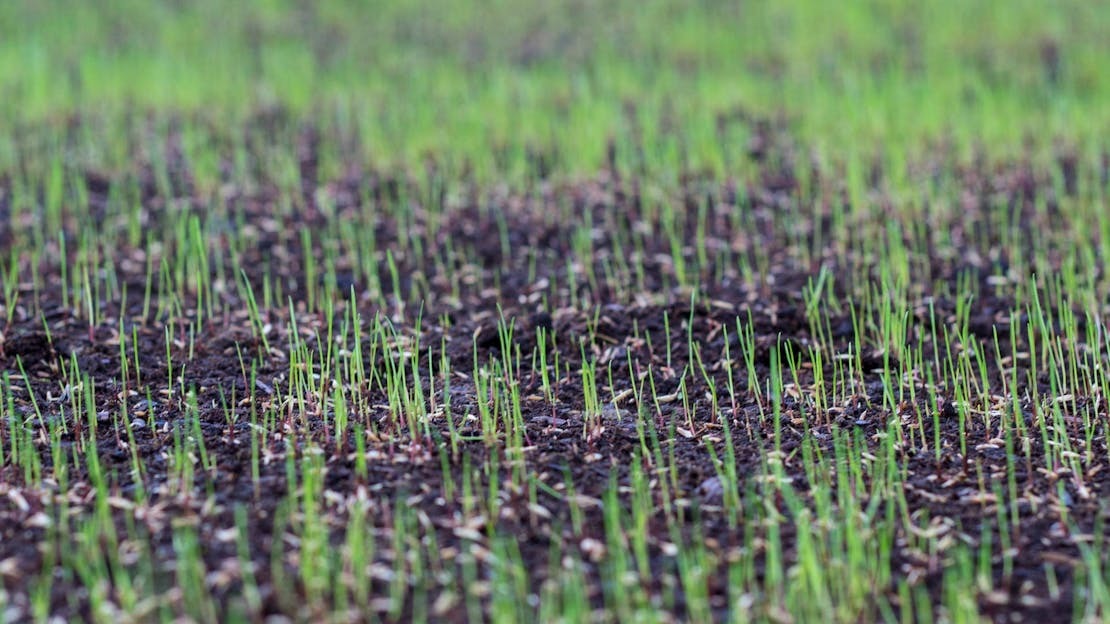
All about Grass Seed Germination
Planting and growing a lawn from grass seed requires warmth, moisture and air to ensure success. Learn what's needed for a great lawn in quick order.
You’ll notice that grass seed like most seeds are very dry. They contain about 10% water and when grass seed is stored it can gain or lose a little water and therefore weight depending on the humidity.
Grass Seed Germination
To germinate, the seed must take on sufficient water to soften the outer husk and flush out the enzymes that keep the seed dormant in a temperature range that allows germination; usually 10 to 15 degrees centigrade depending on seed type.
When seeding you are advised to water frequently. The reason for this is to keep the seed constantly wet for 24-48 hours to flush out inhibiting enzymes. If this is not done correctly and the seed dries between waterings then it goes back to its dormant state. You can water this way for weeks and nothing will happen. The secret is to water lightly and often so that the seed does not dry out. In dry conditions this can be quite a task.
Once that stage is complete, perhaps 24 to 48 hours, more enzymes are activated to enable the seed to utilise stored food and germinate. This is also when oxygen starts to be needed. A small root shoot will then emerge which must contact moist aerated soil for it to develop into a grass plant.
As the seedling is very delicate at this stage with one very shallow root a constant supply of water is needed. If not the root shoot may wither and die so this is a critical few days. Within 10-21 days in total, depending on temperature and seed mixture leaves will have appeared and the grass plant will start to photosynthesise and develop more roots.
So, the first 3 weeks means a good amount of care is needed from you to give the seedling the best start.
Temperature for Germinating Grass Seed
A bag of grass seed is a mixture of different grass seed types. These different grasses all germinate at different temperatures so if you plant when the temperature is only 10 degrees half your seedlings may not germinate. Aim for at least 12 degrees soil temperature when seeding.
If you want to know exactly what your seed mixture will need as regards temperature then once you’ve decided what seed you need form the Lawnsmith Shop, look at the various seed varieties that make up the mixture, then go to Grass Seed and Lawn Seed Mixtures and check out the germination temperature for each seed in your mixture.
You can seed and germinate in slightly cooler temperatures if you cover the lawn with polythene. This creates a greenhouse effect warming the soil by one or two degrees.
Calculating Soil Temperature
A thermometer a couple of inches below the soil surface is the best way to get a soil temperature reading, but who can do that? So, to get a rough idea of soil temperature take an average of day and night air temperatures. Therefore frosty nights are zero and sunny days may be 16. The average is 8 and therefore still a little too cold. Also consider the medium term weather forecast because your seed is going to take perhaps 10-14 days to get going.